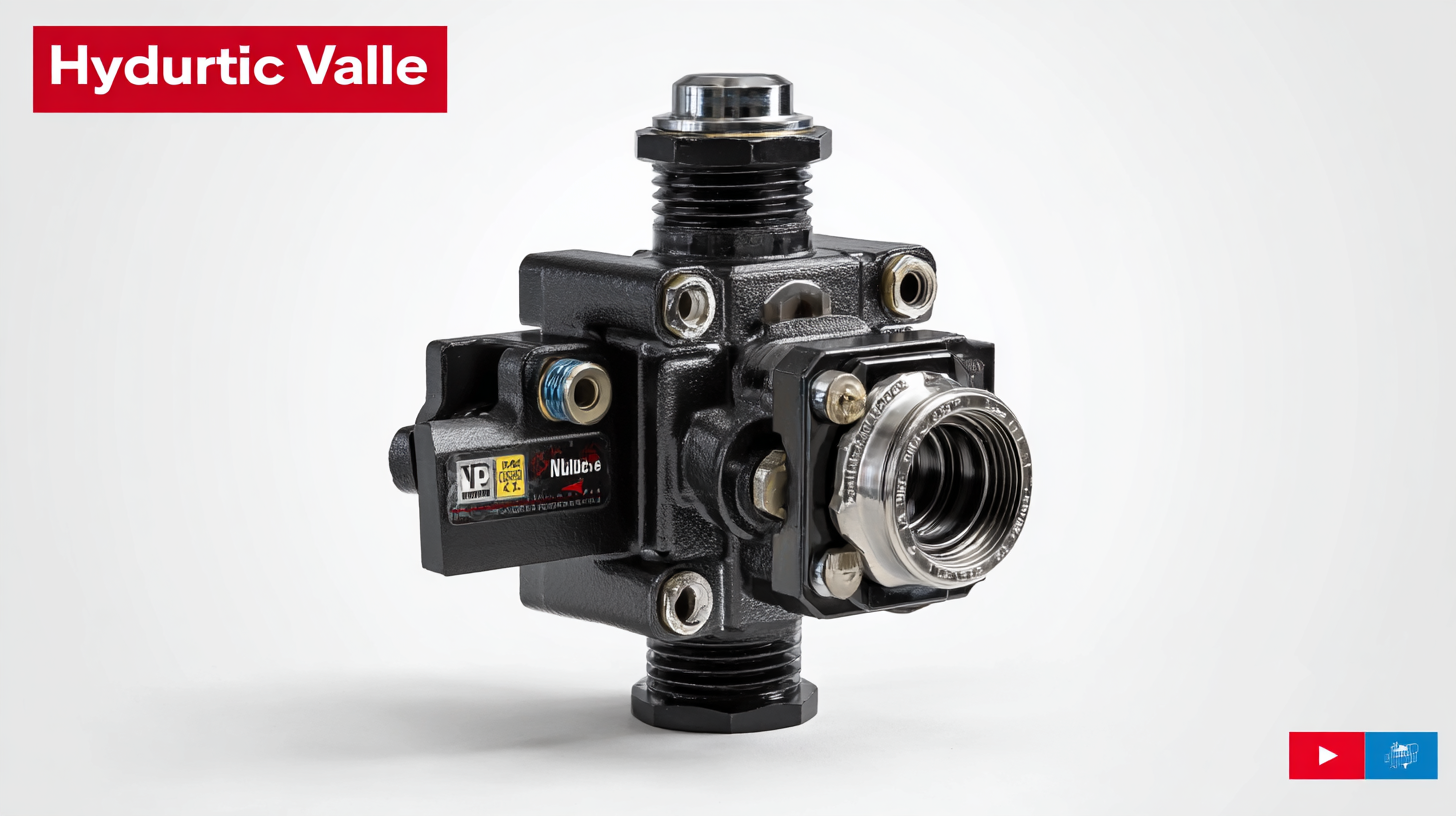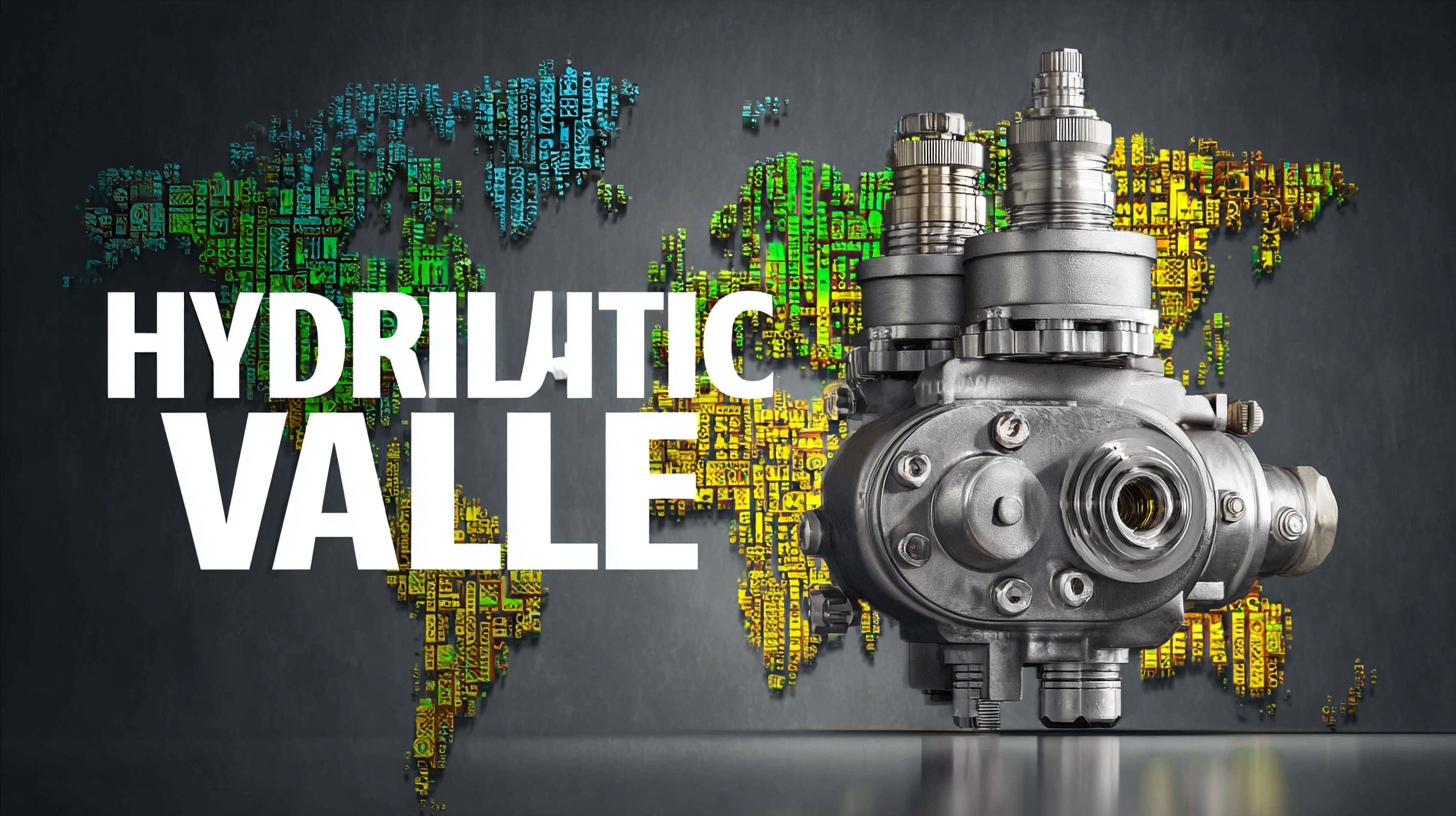

In an era marked by advancing technology and increasing global competition, navigating the best hydraulic valve innovations is crucial for procurement professionals seeking to optimize their supply chains in 2025. According to a report by MarketsandMarkets, the hydraulic valve market is projected to reach $14.5 billion by 2025, growing at a CAGR of 5.3% from 2020. As China emerges as a global manufacturing powerhouse, its hydraulic valve industry is set to play a significant role in meeting international demand for high-quality, reliable components. With a focus on quality winning the global market, procurement professionals must stay informed about the latest innovations, including smart valves and IoT integration, which are reshaping the landscape of hydraulic systems. Understanding these trends will be essential for optimizing procurement strategies and ensuring competitive advantage on the world stage.

In the competitive landscape of hydraulic valve procurement, the significance of after-sales service cannot be overstated. As companies invest in innovative hydraulic technologies, ensuring that a reliable support system is in place becomes crucial. After-sales service encompasses not only the maintenance and repair of products but also the continuous support that aids clients in fully utilizing their equipment. This support can include training programs for staff, which ultimately enhances operational efficiency and optimizes system performance.
Moreover, a strong after-sales service establishes trust and fosters long-term partnerships between suppliers and clients. As organizations increasingly seek sustainable and efficient solutions, those suppliers who prioritize post-purchase support differentiate themselves in the marketplace. Customers can benefit from timely responses to inquiries, prompt servicing, and access to replacement parts, all of which contribute to minimizing downtime, reducing costs, and maximizing productivity. In a global procurement context, choosing a supplier that emphasizes exceptional after-sales service can be a decisive factor in ensuring successful hydraulic valve integration into existing systems.
This chart illustrates the importance ratings (on a scale of 1 to 10) of various hydraulic valve innovations and after-sales service for global procurement in 2025. Innovations appear crucial for enhancing efficiency, while after-sales service is highlighted as a vital component for overall procurement success.
When evaluating hydraulic valve innovations for global procurement in 2025, one crucial aspect to consider is the maintenance costs associated with these advancements. As industries strive for efficiency and reliability, understanding the long-term financial implications of integrating new hydraulic valve technologies can significantly impact operational budgets. Innovative valves often promise enhanced performance, yet they may also come with a complex maintenance regime that could elevate costs if not managed effectively.
Furthermore, it is essential to assess the durability and ease of maintenance of these new designs. Hydraulic valves that incorporate advanced materials or smart technology may offer superior performance but could also require specialized skilled labor or more frequent servicing. Companies should conduct a thorough cost-benefit analysis, comparing the initial investment with the ongoing costs of maintenance, including parts, labor, and potential downtime. By prioritizing innovations that balance high performance with lower maintenance needs, organizations can optimize their procurement strategies to ensure sustained productivity and reduced operational risks in the coming years.
| Innovation Type | Estimated Maintenance Cost (Annual) | Lifespan (Years) | Efficiency Improvement (%) | Market Adoption Rate (%) |
|---|---|---|---|---|
| Electro-Hydraulic Valves | $1,200 | 7 | 15 | 30 |
| Smart Hydraulic Valves | $1,500 | 5 | 20 | 25 |
| Variable Displacement Valves | $1,000 | 10 | 25 | 40 |
| Pilot-Controlled Valves | $900 | 8 | 18 | 35 |
| Proportional Valves | $1,100 | 6 | 22 | 28 |
 As global procurement continues to evolve, the focus on reducing long-term maintenance expenses for hydraulic valves is paramount. Reports from the International Fluid Power Industry indicate that maintenance costs can account for up to 30% of a facility's operational budget. To mitigate these expenses, it is essential to invest in advanced hydraulic valve technologies that offer greater reliability and efficiency. Innovations such as smart valves equipped with IoT sensors provide real-time monitoring, allowing for predictive maintenance and significantly reducing downtime.
As global procurement continues to evolve, the focus on reducing long-term maintenance expenses for hydraulic valves is paramount. Reports from the International Fluid Power Industry indicate that maintenance costs can account for up to 30% of a facility's operational budget. To mitigate these expenses, it is essential to invest in advanced hydraulic valve technologies that offer greater reliability and efficiency. Innovations such as smart valves equipped with IoT sensors provide real-time monitoring, allowing for predictive maintenance and significantly reducing downtime.
Tip: When selecting hydraulic valves for your operations, prioritize those with built-in diagnostic capabilities. These features can alert you to potential issues before they escalate, saving both time and resources in the long run.
Furthermore, incorporating high-quality materials and coatings can extend the lifespan of hydraulic valves. Statistics suggest that using superior components can decrease the frequency of replacements by nearly 25%. Choosing valves designed for specific applications also ensures optimal performance, reducing wear and tear.
Tip: Consider collaborating with suppliers who offer warranties and maintenance support. Long-term partnerships can lead to better service agreements and bulk purchasing advantages, further lowering overall costs.
As the hydraulic valve market evolves, the importance of after-sales support becomes increasingly pronounced in global procurement strategies. Leading manufacturers strive to distinguish themselves not only through quality products but also through comprehensive service offerings. When comparing after-sales support, look for responsiveness, availability of spare parts, and the level of technical assistance provided. These factors can significantly influence the operational efficiency and downtime of your hydraulic systems.
Tip: Always evaluate the support channels available, including phone, email, and online chat. Quick access to knowledgeable technicians can make a significant difference when urgent issues arise.
Additionally, consider the training and resources offered by manufacturers as part of their after-sales support. Access to user manuals, installation guides, and training sessions can empower your team and enhance product reliability. Some companies even provide online platforms where customers can share experiences and solutions, fostering a collaborative support environment.
Tip: Engage with community forums and user groups to gain insights into the performance and support experiences of different manufacturers. This peer feedback can help guide your procurement decisions.
In an increasingly competitive manufacturing landscape, the selection of hydraulic valves significantly impacts operational efficiency and cost reductions. According to a recent report by MarketsandMarkets, the global hydraulic valve market is projected to reach USD 6.24 billion by 2025, underscoring the importance of investing in innovative technologies that enhance performance and reduce maintenance costs. Choosing the right hydraulic valve can lead to a staggering decrease in downtime—by as much as 30%—when the valve operates at optimal performance levels and prevents leaks or failures.

When evaluating options, it’s crucial to consider factors such as valve type, pressure rating, and compatibility with existing systems. For instance, high-performance proportional valves can improve control precision and responsiveness, which is essential in applications that demand high reliability. A report from Research and Markets highlights that companies utilizing advanced hydraulic systems report an average of 15% savings in operational costs annually, simply by minimizing breakdowns and improving fluid power efficiency. Thus, selecting the right hydraulic valve not only aligns with technical requirements but also contributes to overall business profitability.